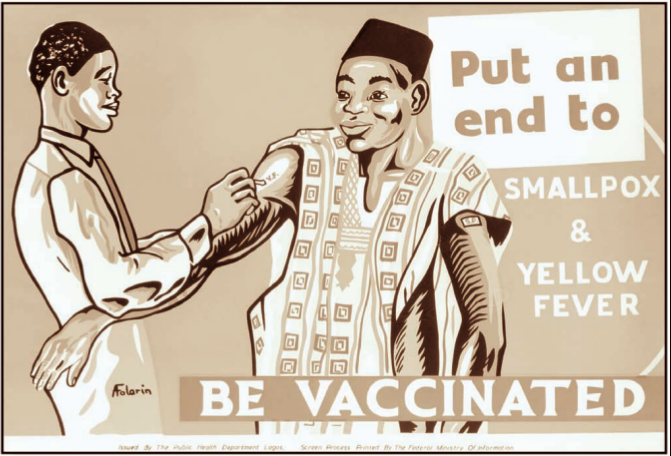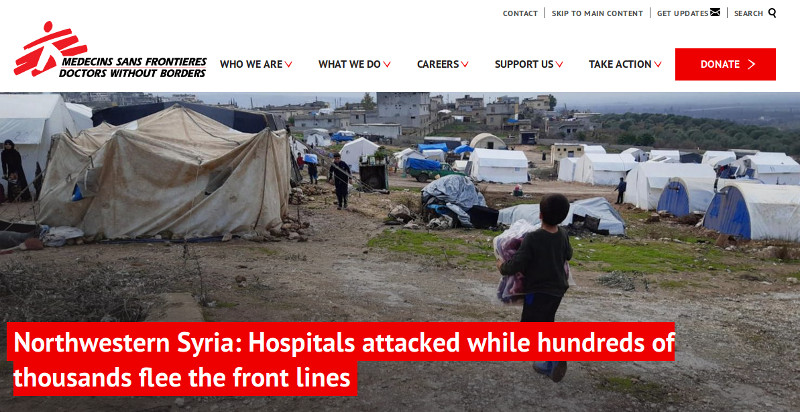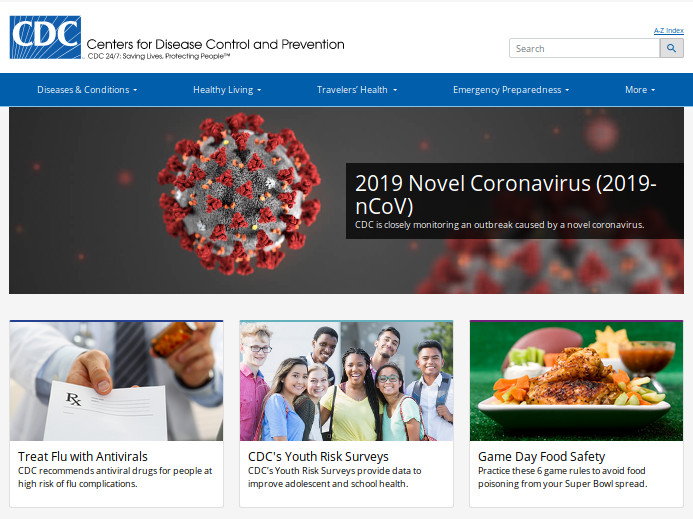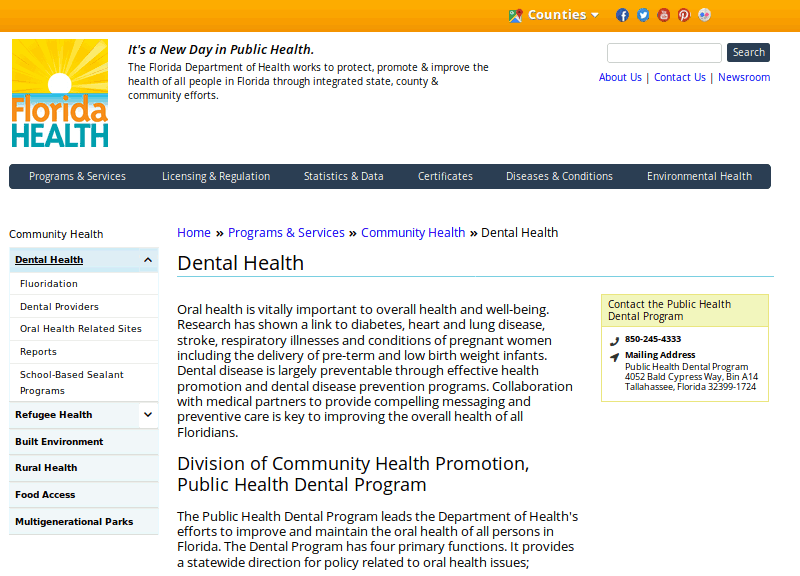Public Health Organizations and Agencies
This tutorial will briefly introduce public health organizations at the international, US national, and US local/state scales of activity, as well as examples of geospatial health data that are commonly publicly available from agencies at those different scales.
International Public Health Organizations
The World Health Organization
Perhaps the world's premier international public health organization is the World Health Organization (WHO) which was formed as the public health agency of the United Nations. The WHO's constitution was adopted by the International Health Conference held in New York, signed on 22 July 1946 by representatives of 61 States, and went into force on 7 April 1948. The WHO employs 7,000 people in 150 country offices, six regional offices, and at the WHO headquarters in Geneva, Switzerland (WHO 2020a).
The WHO (2020b) has three core objectives:
- Promote health: improve access to essential health services, medical projects, and trained healthcare workers
- Keep the world safe: prepare for, detect, and respond to health emergencies
- Serve the vulnerable: address social determinants of public health
Specifically the WHO addresses:
- Human capital across the life-course
- Noncommunicable diseases prevention
- Mental health promotion
- Climate change in small island developing states
- Antimicrobial resistance
- Elimination and eradication of high-impact communicable diseases

Other International Non-Governmental Organizations
While public health organizations are often agencies of national governments, public health organizations that work internationally are often not associated with any particular national government. Private organizations that operate without direct government control, and are non-profit and non-criminal, are often referred to as non-governmental organizations or NGOs (Folger 2020).
There are a vast array of NGOs working in a variety of aspects of public health. International NGOs commonly focus on the Global South where public health needs are often great and unmet by local economies or governnments. Some examples include:
- Africare: NGO committed to addressing African development and policy issues by working in partnership with African people to build sustainable, healthy and productive communities
- Bill and Melinda Gates Foundation: NGO that provides funding focused on poverty, health, and education to improving quality of life
- The Carter Center: NGO that focuses on maternal and child health, global mental health access, and six specific preventable diseases — Guinea worm, river blindness, trachoma, schistosomiasis, lymphatic filariasis, and malaria in Hispaniola
- Doctors Without Borders / Médecins Sans Frontières (MSF): NGO that provides medical aid to the developing world in conflict zones, after natural disasters, during epidemics, and in long-term care settings
- The International Red Cross and Red Crescent Movement: A global humanitarian network of 80 million people consisting of the International Committee of the Red Cross, the International Federation of Red Cross and Red Crescent Societies and the 191 National Red Cross and Red Crescent Societies, with a focus on helping those facing disaster, conflict and health and social problems
- OXFAM International: NGO focused on global poverty eradication, with notable efforts in water and sanitation
- Save the Children: NGO that strives to keep children around the world safe and healthy, with notable efforts to end preventable child deaths with a focus on maternal, newborn and child health and nutrition as well as alleviating hunger

Mapping International Public Health Data
International public health agencies often capture and collect geospatial data as part of their surveillance activities.
The World Bank is a group of international agencies that provide funding and knowledge to promote economic development in developing countries. It was one of the institutions founded as part of an international agreement made during a 1944 conference in Bretton Woods, NH that was convened to plan for reconstruction after World War II and promote international cooperation that would help avoid World War III (The World Bank 2020a, 2020b).
The World Bank collects a vast array of country-level data, and makes it available to the general public on their data.worldbank.org data portal as part of their mission to be a source of knowledge that promotes economic development.
The tutorial below shows how to create a choropleth of country-level health-related data collected by the World Bank, using a layer in the FSC ArcGIS Online organization. This data is also available as a GeoJSON file that can be downloaded here.
- Create a new Map
- Add -> Search for layers
- Style -> Choose an attribute to show
- Change symbol to change ramp
- Invert if needed so darker colors represent less desirable situations
- Show item details to see metadata
- Save with a meaningful title
- Share to get a link
National Public Health Organizations
The Centers for Disease Control and Prevention
Almost all countries have public health agencies associated with their national governments.
The Centers for Disease Control and Prevention (CDC) is the US federal government's premier public health agency. The CDC works to "protect America from health, safety and security threats, both foreign and in the U.S. Whether diseases start at home or abroad, are chronic or acute, curable or preventable, human error or deliberate attack, CDC fights disease and supports communities and citizens to do the same" (CDC 2019a).
The CDC began operation in 1946 as Communicable Disease Center, with a focus on malaria prevention. The CDC is an agency under the US Department of Health and Human Services (HHS) and is headquartered in Atlanta, GA (CDC 2019b).
CDC programs address a wide variety of issues, including:
- Infectious disease surveillance, preparedness, and response
- Notices to travelers about international health threats
- Emergency preparedness for pandemics, chemical emergencies, and biological warfare
- Adolescent and school health
- Food safety
- Tobacco use

CDC Health Data
A fundamental part of the agency's mission is surveillance, and in that role the CDC collects and disseminates a vast array of public health data, contributing to the work of public health researchers around the world. Unfortunately, that data it is distributed across multiple sites using a variety of different web apps and download formats, making it difficult to access and use some data sets.
One easy-to-use portal is the Chronic Disease Indicators site, which gives easy access to set of surveillance indicators that enable public health professionals and policymakers to retrieve uniformly defined state and selected metropolitan-level data for chronic diseases and risk factors that significantly impact on public health.
Indicator values are commonly given as one of three types of values:
- Incidence: The number of people newly diagnosed with a condition
- Prevalence: The number of people living with the condition
- Mortality: The number of people who died from a condition
Indicator values can be adjusted to reflect the way that health conditions tend to affect older people more than younger people:
- Crude rates are simply the number of cases divided by the population.
- Age-adjusted rates have been modified to reflect the age distribution of the areas where the crude rates are calculated. This permits the rates to reflect where health conditions are unusually common or rare rather than where the population is simply unusually old or young.
The following video shows how create state choropleths of CDI data.
State and Local Public Health Organizations
All US states have departments of public health (under a variety of names) that maintain vital records and health data as a part of their mission to promote good health in their state. All of those departments make some of that data available for download through their websites.
Many counties and cities (such as New York City) also have their own local departments of health, although in some states (such as Florida), local departments of health are offices of the state department of health.
While state and local departments of health coordinate with larger-scale authorities to respond to large-scale issues like communicable disease epidemics, state and local departments of health more commonly address highly localized issues that affect individuals or specific communities. For example, the New York City Department Health and Mental Hygiene handles:
- Restaurant inspections
- Birth and death certificates
- Immunization records
- Dog licenses
- Drug and alcohol dependency programs
- Tuberculosis and sexually-transmitted disease treatment and prevention

State and Local Geospatial Health Data
Because there are no universal standards for exchanging geospatial data, and because public distribution of data is complex and expensive, health data availability in different state and local jurisdictions is highly variable.
In addition, research access to individual level health data is highly constrained by privacy laws such as Health Insurance Portability and Accountability Act of 1996 (HIPAA).
You can usually find your state or city's public health data portal by Googling "<city_name> public health data" or "<state_name> public health data."
Bibliography
Centers for Disease Control and Prevention (CDC). 2019a. "Mission, Role and Pledge." Accessed 7 July 2019. https://www.cdc.gov/about/organization/mission.htm.
Centers for Disease Control and Prevention (CDC). 2019b. "Our History - Our Story." Accessed 7 July 2019. https://www.cdc.gov/about/history/.
The Florida Department of Health. 2020. "Dental Health." Accessed 2 February 2020. http://www.floridahealth.gov/programs-and-services/community-health/dental-health/index.html.
Folger, Jean. 2019. "What is an NGO (Non-Governmental Organization)?" Accessed 1 February 2020. https://www.investopedia.com/ask/answers/13/what-is-non-government-organization.asp.
Wellcome Collection. 1947. "World Health Organisation Interim Committee on Malaria." Accessed 1 February 2020. https://wellcomecollection.org/works/j8hv54px.
The World Bank. 2020a. "What We Do." Accessed 1 February 2020; https://www.worldbank.org/en/about/what-we-do.
The World Bank. 2020b. "Bretton Woods Monetary Conference, July 1-22, 1944." https://www.worldbank.org/en/about/archives/history/exhibits/bretton-woods-monetary-conference.
World Health Organization (WHO). 2020. "About WHO." Accessed 1 February 2020. https://www.who.int/about/.
World Health Organization (WHO). 2020b. "What we do." Accessed 1 February 2020. https://www.who.int/about/what-we-do.
World Health Organization (WHO). 2009. "Public health campaigns: Getting the message across." Accessed 1 February 2020. https://www.who.int/about/history/publications/9789240560277/en/.